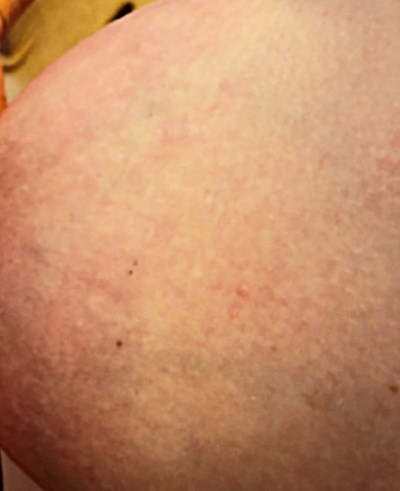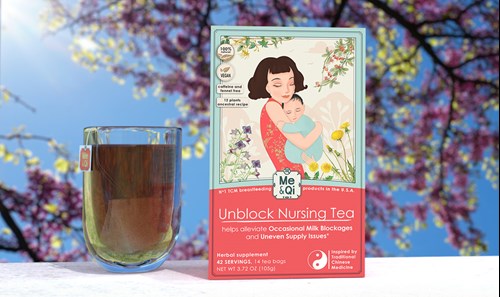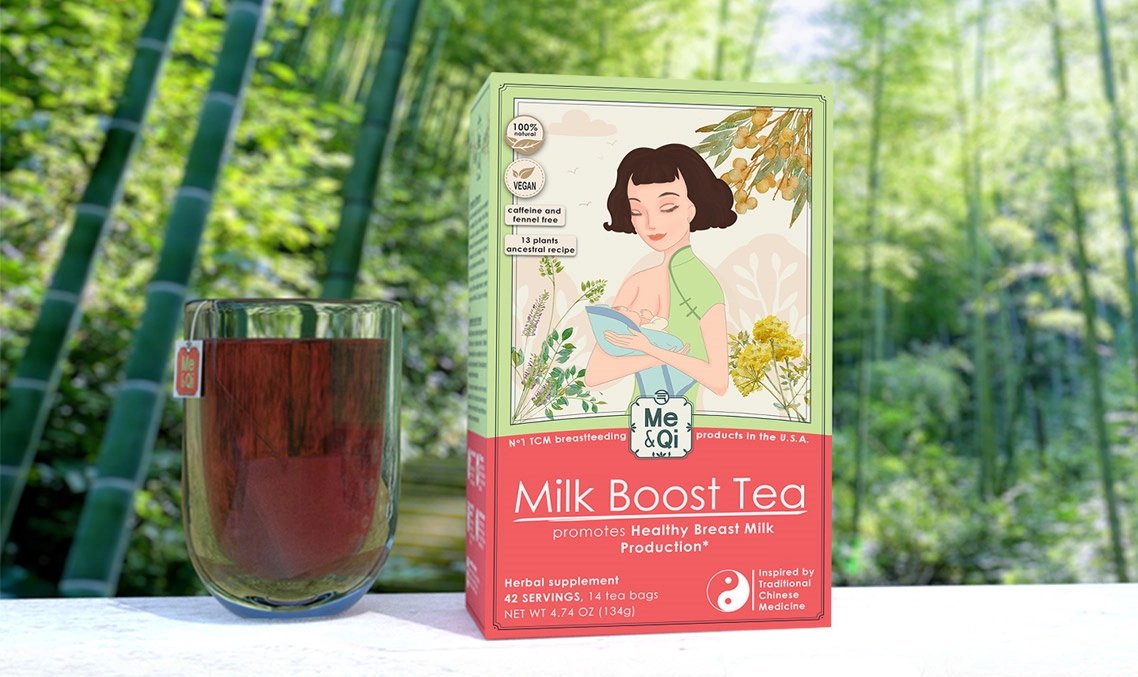Contents
- What Is Haakaa Clogged Duct?
- Haakaa tricks for clogged milk duct
- Substitute for Epsom salt for clogged milk duct:
- What do I do if my clogged milk duct won't unclog with Haakaa?
- Can I use Haakaa for mastitis?
- How often should I use Haakaa for clogged duct?
- How long does it take for Haakaa to unclog a duct?
- Do I need to sterilize Haakaa after every use?
- Is it okay to use Haakaa instead of pumping?
- Will Haakaa increase milk supply?
- What is the disadvantage of the Haakaa pump?
Breastfeeding mothers often face various challenges, one of which is dealing with clogged milk ducts. The Haakaa clogged duct is an innovative solution that has been gaining popularity for its effectiveness. In this article, we will discuss how the Haakaa pump can help with clogged milk ducts and provide you with essential information to overcome this common breastfeeding obstacle.
What Is Haakaa Clogged Duct?
A Haakaa clogged duct refers to a blocked or congested milk duct that is treated using a Haakaa breast pump. The Haakaa is a silicone breast pump that can help unclog milk ducts by creating gentle suction on the breast, encouraging milk flow and relieving the blockage.
To understand how Haakaa pump works, we need to first understand what a clogged milk duct is and what are the causes.
A clogged milk duct, also known as a blocked milk duct, most occurs when milk gets trapped in the breast tissue and cannot flow freely. Typical symptoms and signs include:
-

Clogged Milk Duct Picture - tender and hard lump or nodules in the breast or areola
- redness or warmth on the breast surface
- sharp and shooting pain inside the breast
- sudden decreased milk flow or production from the affected breast
- breast engorgement with chest feeling heavy, swelling and pressed
To know more details and images of clogged milk duct, please refers to this article.
Clogged milk ducts while breastfeeding can be caused by various factors, including:
-
- Sudden changes in breastfeeding schedule or routine is the most common cause, because the body doesn’t have enough time to adapt. It is recommended to gradually increase or decrease milk supply and wean. Do not skip a feeding session. Use pumping machine in case you are not around the baby.
- Improper latching and feeding positions that prevent effective milk drainage.
- Changes in daily habits, activities, or environments, including stress from travel or relocation.
- Wearing tight bras or clothes that put pressure on breast tissue.
- Milk blebs or blisters, which can block nipple pores and disrupt milk flow.
- Sleeping on your stomach, which puts pressure on milk ducts.
- Vigorous upper body exercise.
- Prolonged use of nipple shields, which can hinder milk extraction.
- Accumulated toxic-heat in the breasts due to a heavy and fat diet, insufficient water intake, or emotional stress.
Recurrent clogged ducts, especially in the same spot, are often caused by long-term issues such as a high-fat diet or consistent stress. Factors like tight clothing or bras putting pressure on a specific area, improper latching, or positioning during breastfeeding can also contribute to recurring clogs.
Some mothers may be more prone to clogged milk ducts due to factors like prolactin hormone levels, breast size and shape, or milk thickness. One-off clogged ducts usually result from sudden changes in breastfeeding routines and often resolve on their own.
For more information on clogged milk duct causes, please check out this detailed article.
Haakaa tricks for clogged milk duct
It involves using the Haakaa silicone breast pump along with Epsom salt, warm compress, massage and other equipment to help unclog the duct. Here are the step by step procedures on how to perform the Haakaa trick:
- Prepare the Epsom salt: Mix 1-2 tablespoons of Epsom salt with warm water inside the Haakaa pump. The Epsom salt helps reduce inflammation and promote milk flow.
- Apply a warm compress: Place a warm compress on the affected breast for about 10-15 minutes to help loosen the clog and encourage milk flow.
- Attach the Haakaa pump: squeeze the Haakaa lower part to release the air inside the container, position the upper opening over your nipple and areola, ensuring a secure seal, and then let go of the squeeze. The pump will generate gentle suction that assists in drawing out the milk and unclogging the duct.
- Keep the Haakaa in place: Allow the Haakaa pump to stay in place for 10-15 minutes or until you notice the milk flow has improved and the clog has resolved. Reapply the warm compress and massage the breast as needed during this time.
- Massage the affected area at the same time: Gently massage the breast, focusing on the clogged area, to help break up the blockage.
- Drain the breast completely: After the clog has resolved, ensure you empty your breast completely by nursing your baby or using another breast pump. This helps prevent future clogs and promotes healthy milk flow. To save time, you can also apply Haakaa pump on the clogged breast while you nurse your baby on the other one.
Substitute for Epsom salt for clogged milk duct:
When Epsom salt is dissolved in warm water, it releases magnesium and sulfate ions, which are known for their ability to relax muscles and reduce inflammation. They can help to ease tension in the breast tissue surrounding the clogged duct.
If you don't have Epsom salt available, you can use warm water alone or try adding a few drops of lavender essential oil to the warm water in the Haakaa pump. It also provides soothing and anti-inflammatory benefits.
What do I do if my clogged milk duct won't unclog with Haakaa?
There are numerous alternative methods for preventing and treating clogged milk ducts. In fact, it's advisable to explore other free home remedies first before purchasing a Haakaa silicone pump. Here are some popular prevention and treatment methods:
To prevent recurrent clogged milk ducts, especially these on the same spot, it is recommended to:
- Maintain a consistent breastfeeding schedule and routine.
- Empty your breasts completely each time by direct nursing or pumping machine.
- Wear comfortable bras and clothes to avoid putting pressure on the breasts.
- Avoid trauma to the breasts that may lead to swelling and clogged ducts.
- Adopt a balanced diet (eg: less heavy foods such as diary, alcohol, red meat, chocolate and etc) to avoid Toxic-Heat accumulation in the breasts, as per Traditional Chinese Medicine.
- Manage emotional stress and maintain a good mood to promote healthy milk flow. Get enough sleep and take naps when possible to reduce fatigue.
- Engage in regular outdoor activities and exercise for physical and mental well-being.
- Seek help from others, openly communicate your feelings, and consider professional support if needed.
- Some mothers are more prone to clogged milk duct due to genetic reasons. Unblock Nursing Tea can help to balance the body's constitution and reduce the likelihood of recurrent clogged milk ducts.
To treat existing clogged milk duct, we would suggest the following home remedies:
- Let your baby feed from the affected breast first to help clear blockages.
- Modify baby's latching and positioning techniques to ensure effective breast emptying.
- Add extra pumping sessions for the affected breast and use a higher-grade setting on your pumping machine.

- Seek assistance from your partner or husband to help clear the blockage through forceful sucking.
- Avoid consuming high-fat and heavy foods that can worsen clogged duct symptoms.
- Stay hydrated to promote milk flow and unclog milk ducts.
- Try Unblock Nursing Tea, which is a blend of natural cooling herbs such as licorice, goji berries, dandelion, and honeysuckle. These herbs collaboratively target the underlying cause of clogged milk ducts, which is Toxic Heat in the breasts, while also alleviating associated symptoms like sharp and shooting pain, breast itching, swelling, and redness.
Explore this insightful article on home remedies for unclogging milk ducts. The article also provides information on various techniques to alleviate related symptoms, such as sharp, shooting pain, nipple fissures, breast eczema, and issues with nipple itching and peeling.
Can I use Haakaa for mastitis?
Yes, you can use a Haakaa for mastitis to help with milk removal and to provide relief. Mastitis is an inflammation of the breast tissue that can result from a blocked milk duct or infection. Using a Haakaa can help to gently remove milk from the affected breast, which can reduce pressure and alleviate pain.
However, it's important to note that using a Haakaa should not be the only treatment for mastitis. If you suspect you have mastitis, it's crucial to consult with a healthcare professional for proper diagnosis and treatment, which may include antibiotics if there is an infection present.
How often should I use Haakaa for clogged duct?
You can use the Haakaa as often as you breastfeed or pump, which is typically every 2-3 hours for a newborn, and less frequently as your baby grows older. Leave the Haakaa on for at least 10-15 minutes during each session, and continue using it as needed until the duct is cleared.
It's essential to monitor your symptoms and seek medical advice if the clogged duct does not improve or if you notice signs of infection, such as fever, increased pain, or redness.
How long does it take for Haakaa to unclog a duct?
The time it takes for a Haakaa to unclog a duct can vary depending on the severity of the blockage and individual factors. Some mothers may find relief within a single use, while others may require multiple sessions over several days to fully unclog the duct.
It's important to be patient and persistent when using a Haakaa to treat a clogged duct. Continue to use it during each breastfeeding or pumping session until the blockage is resolved.
Remember to also incorporate other methods mentioned above to help clear the clogged duct.
Do I need to sterilize Haakaa after every use?
It's essential to clean your Haakaa breast pump after each use, but sterilizing it after every use may not be necessary. You can simply wash the Haakaa with warm, soapy water, rinse thoroughly, and let it air dry after each use.
However, it's recommended to sterilize the Haakaa regularly, especially when you first purchase it or if it hasn't been used in a while. Sterilization can help ensure that the pump remains free of bacteria and other harmful germs.
To sterilize the Haakaa, you can use a sterilizing solution such as boiling water or a steam sterilizer. Make sure to follow the manufacturer's guidelines for proper sterilization methods and frequency.
Remember, always wash your hands before handling the breast pump and ensure that your pump and all its components are completely dry before use to minimize the risk of contamination.
Is it okay to use Haakaa instead of pumping?
Using a Haakaa instead of a traditional electric or manual breast pump can be a personal choice, depending on your individual needs and preferences. The Haakaa is a silicone breast pump that relies on gentle suction to collect milk, making it a passive and convenient option for many breastfeeding mothers.
Some mothers may find it helpful to have both a Haakaa and an electric or manual pump on hand, using each as needed. Here are some factors to consider when deciding if the Haakaa is right for you:
- Efficiency: Haakaa is not as efficient as an electric or manual pump in terms of extracting milk. If you need to pump a large volume of milk or build a substantial milk stash, an electric or manual pump might be more suitable.
- Convenience: The Haakaa is compact, portable, and requires no power source or batteries. It is easy to use and clean, making it an attractive option for moms who want a fuss-free way to collect milk.
- Occasional use: If you only need to express milk occasionally or want to collect milk from one breast while nursing on the other, the Haakaa can be a great option.
- Noise: Haakaa is much quieter compared to electric pumps, so it can be more discreet and less disruptive when used around a sleeping baby or in public.
- Cost: The Haakaa is generally much more affordable than electronic breast pumps.
Will Haakaa increase milk supply?
The Haakaa pump can potentially help increase milk supply indirectly. Although it is not designed specifically for this purpose, it can be beneficial in certain situations.
Using the Haakaa pump can help you collect let-down milk from one breast while your baby nurses on the other. This extra milk collection can send signals to your body that more milk is needed, stimulating the production of more breast milk over time.
To help create your milk supply, you can drink galactagogue teas such as Milk Boost Tea. It's packed with 13 different natural plants that each play a role in supporting lactation. These plants have literally been used for millennia to help support women when they breastfeed.


Additionally, if you use the Haakaa pump regularly to express milk in addition to your regular nursing or pumping sessions, it may help increase your milk supply by increasing the frequency of milk removal.
However, it is important to note that the Haakaa pump may not be as efficient or effective as a traditional electric or manual breast pump for increasing milk supply, as it relies on passive suction.
For mothers looking to actively increase their milk supply, a more powerful electric or manual pump, lactation supplements such as Milk Boost Tea, or simply additional nursing and pumping sessions might be more effective.
What is the disadvantage of the Haakaa pump?
While the Haakaa pump offers many benefits, there are some disadvantages to consider:
- Less efficient: Haakaa may not be as efficient as an electric or manual breast pump when it comes to expressing milk. It relies on passive suction, which might not be strong enough for some mothers, and may require more time to collect milk.
- Single breast usage: The Haakaa pump can only be used on one breast at a time. This might be inconvenient for those looking to express milk from both breasts simultaneously, as is possible with some electric double pumps.
- No adjustable suction levels: Unlike electric breast pumps, the Haakaa does not have adjustable suction levels, which may limit your ability to customize your pumping experience to your comfort and needs.
- Risk of spillage: Since the Haakaa pump attaches to the breast using suction and hangs from the breast, it can be more prone to accidental spillage or dislodgement, especially if you're moving around or if the baby kicks it.
- Limited capacity: The Haakaa has a limited capacity (usually around 4-5 oz), which might require you to empty it more frequently if you have a higher milk supply or if you're pumping for an extended period.
- Not suitable for everyone: Some mothers might not find the Haakaa pump comfortable or effective due to differences in breast size, shape, or individual milk production.
It's essential to weigh the pros and cons of the Haakaa pump based on your individual needs, preferences, and breastfeeding goals.

